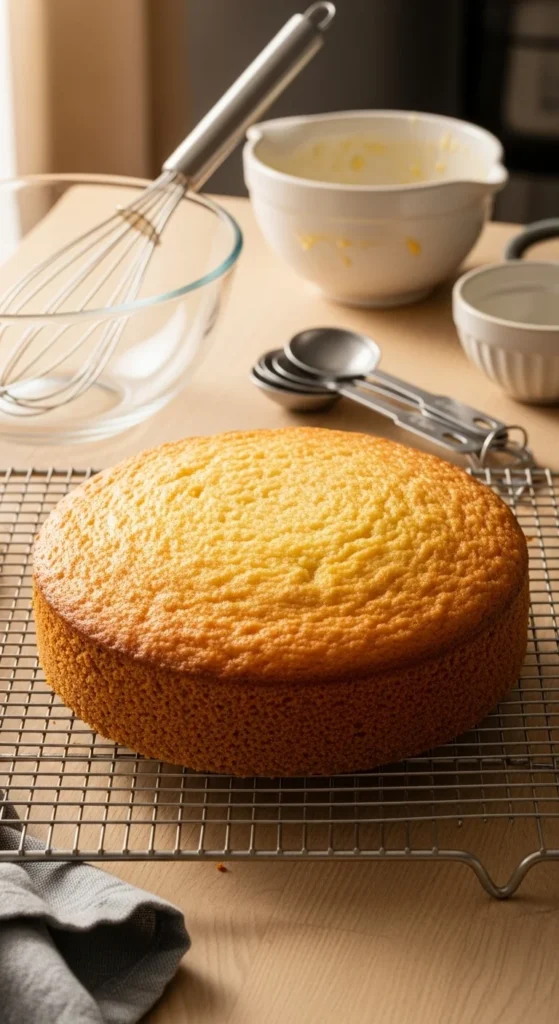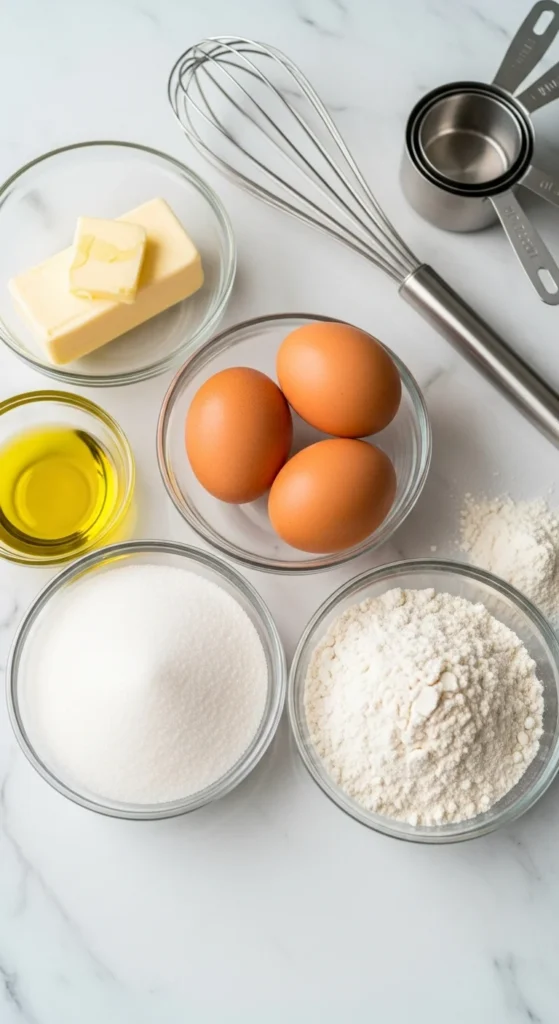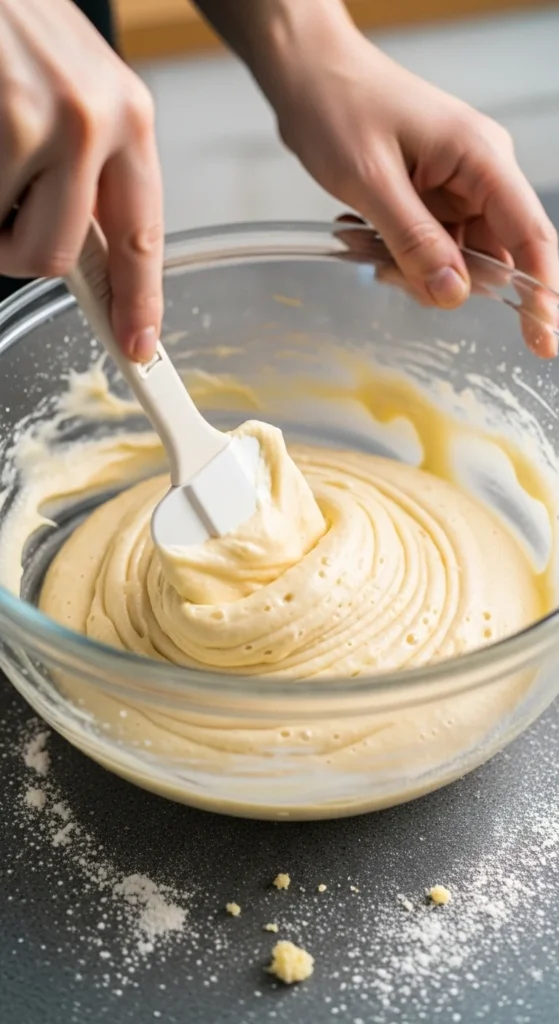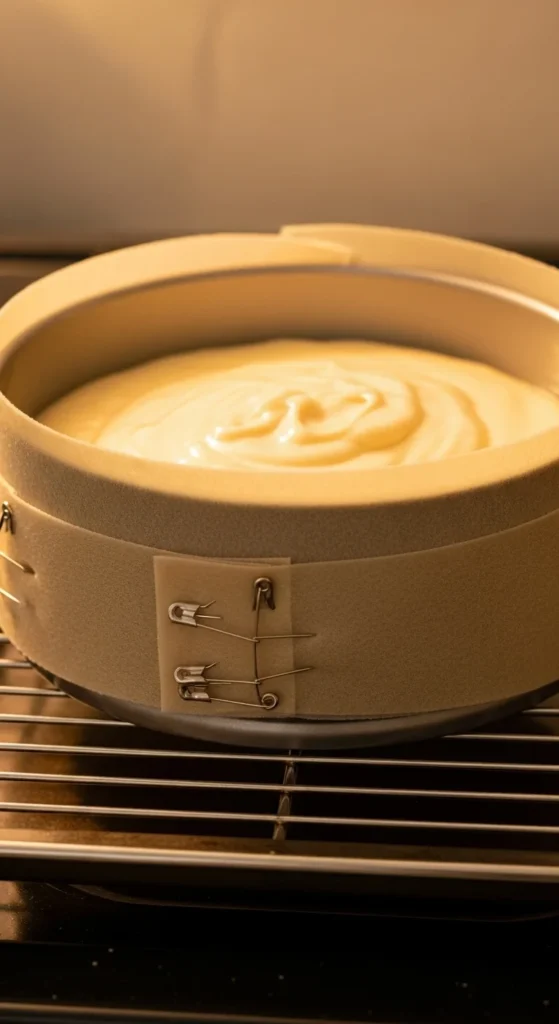There’s nothing more satisfying than pulling a golden, perfectly baked cake out of the oven — soft, moist, and beautifully flat on top. Yet, for many home bakers, the struggle is real: dry texture, domed tops, or uneven layers can ruin even the best recipes. The truth is, baking a moist, level cake isn’t about luck — it’s about technique. Once you master a few secrets, you’ll bake like a pro every single time.

The Secret Starts with Ingredients
Moist, level cakes begin long before you turn on the oven — it all starts with your ingredients and how you handle them.
Use the Right Fat
Butter adds flavor, but oil adds moisture. The best cakes often use both. Butter creates richness, while oil keeps the crumb soft and tender.
- Butter = flavor + structure
- Oil = moisture + softness
Don’t Skip the Eggs
Eggs help bind and aerate the batter. Use room temperature eggs so they mix evenly and trap more air — the key to a light, fluffy texture.
Choose the Right Sugar
Granulated sugar gives structure, while brown sugar adds a touch of molasses moisture. Combining them creates depth and keeps your cake soft longer.

Step 1: Measure Precisely
Baking is science — even a tablespoon too much flour can dry your cake. Always:
- Spoon and level your flour instead of scooping directly from the bag.
- Use measuring cups for dry ingredients and a liquid measuring cup for wet ones.
- Weigh your ingredients if possible for consistency.
If your cakes often turn out dense or crumbly, this step alone can change everything.
Step 2: Mix Smart, Not Hard
Overmixing your batter creates tough cakes, while undermixing leaves lumps and uneven rise. The sweet spot is just combined.
Here’s the method:
- Cream the butter and sugar together until fluffy — this adds air for a tender crumb.
- Add eggs one at a time, mixing gently after each.
- Alternate adding dry and wet ingredients, starting and ending with the dry.
Stop mixing as soon as the flour disappears. Smooth is good, but overmixing breaks the delicate air bubbles your cake needs to rise evenly.

Step 3: Bake for Even Layers
A level cake depends as much on how you bake it as what’s in it.
Use the Right Pan
- Use light-colored metal pans for even baking. Dark pans can brown the edges too fast.
- Grease and line pans with parchment paper for clean release.
Distribute the Batter Evenly
Before baking, use a spatula to spread the batter evenly, pressing slightly toward the corners. Tap the pan gently on the counter to remove trapped air bubbles.
Insulate the Edges
Here’s a pro tip: wrap your cake pan with a damp baking strip (or a wet towel). It keeps the outer edges cool so the center cooks evenly. No more domed tops — just a flat, level cake ready for frosting.

Step 4: Watch the Temperature
Temperature is everything when it comes to moistness and shape.
- Preheat your oven — baking in a cold oven delays the rise and makes cakes dense.
- Bake at 325°F (163°C) instead of 350°F (177°C) for a gentler, more even rise.
- Use an oven thermometer — many ovens run hotter or cooler than the dial says.
Don’t open the oven door too early — that sudden drop in temperature can cause sinking centers. Wait until the cake looks golden and pulls away slightly from the sides before checking doneness.
Step 5: Cool & Moisturize the Right Way
Once baked, cooling and storing your cake correctly will keep it soft and moist.
Cool in the Pan First
Let the cake rest in the pan for 10–15 minutes before removing it. This helps it set and prevents breaking.
Lock in Moisture
While still slightly warm, brush the cake with a simple syrup (equal parts sugar and water boiled together). It keeps every bite tender and prevents drying, especially if you plan to frost later.

Wrap It Up
Once fully cool, wrap the layers tightly in plastic wrap or store in an airtight container. This traps moisture and helps your cake stay bakery-soft for days.
Bonus Tips for Picture-Perfect Cakes
- Use fresh ingredients: Old baking powder or flour can ruin texture.
- Don’t rush cooling: Frosting a warm cake can cause melting and sliding layers.
- Trim the top: If a small dome appears, use a serrated knife to level before stacking.
- Add moisture boosters: Ingredients like sour cream, yogurt, or applesauce create rich, soft cakes every time.
Final Thoughts
A moist, level cake isn’t about fancy tools — it’s about paying attention to the small details. With the right mixing technique, oven temperature, and a few pro tricks, you can create bakery-quality results right in your own kitchen.
So next time you bake, slow down, follow these steps, and watch your cake rise evenly and stay irresistibly moist.



Leave a Reply